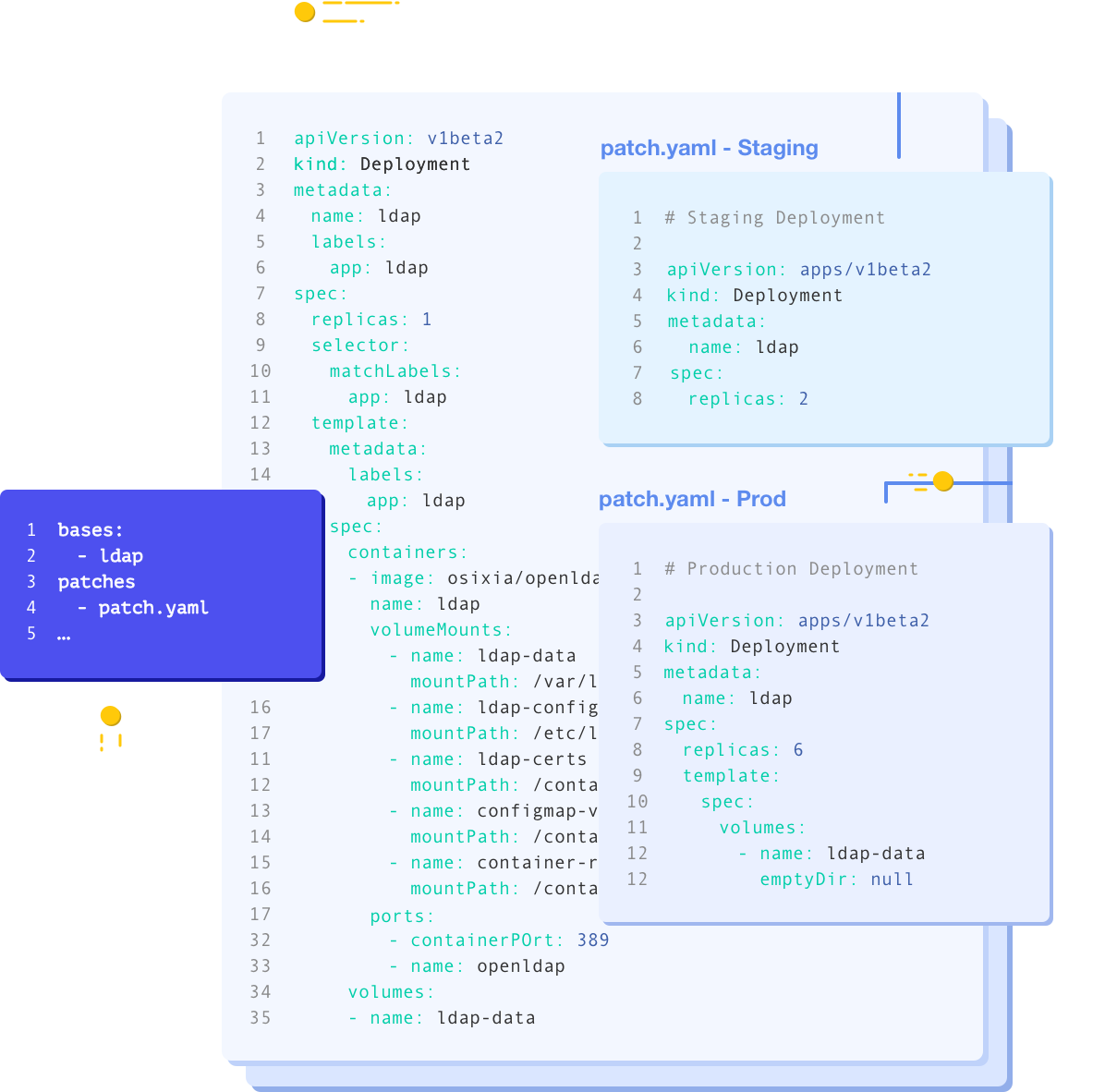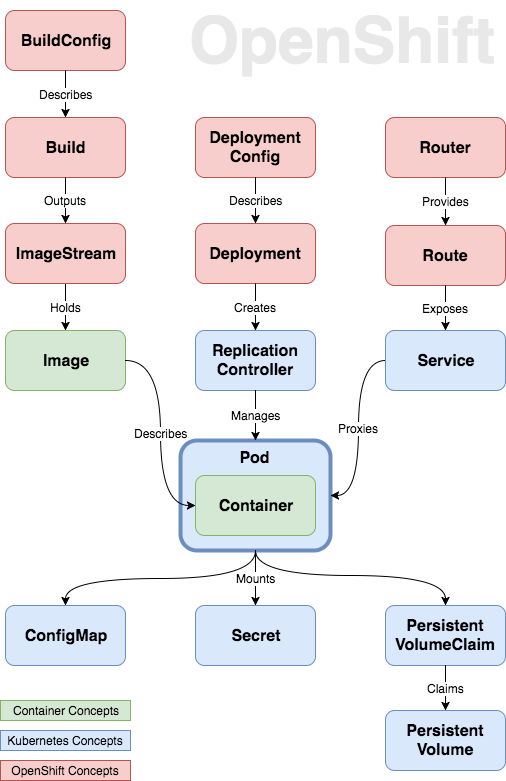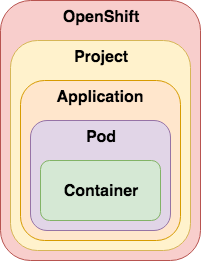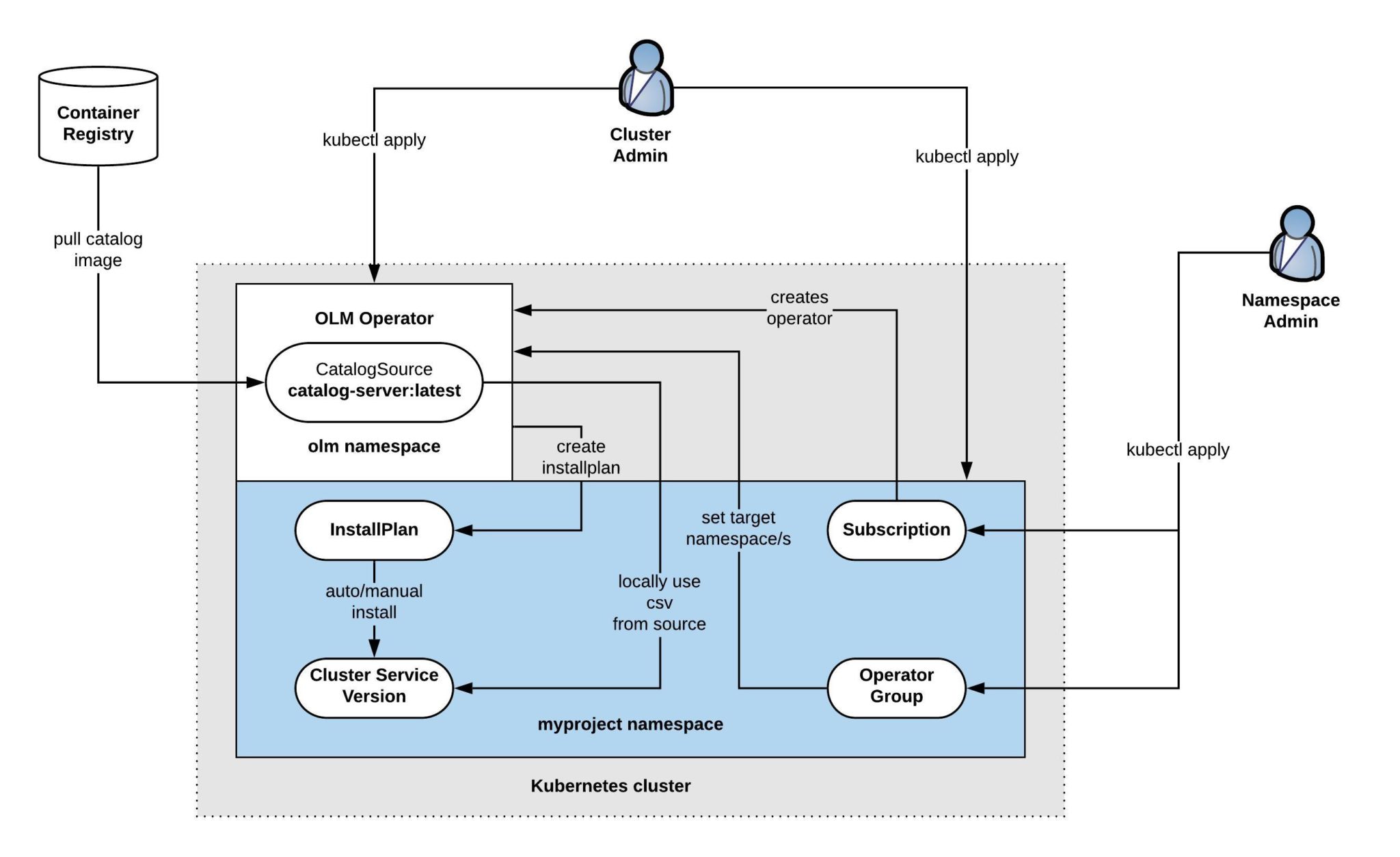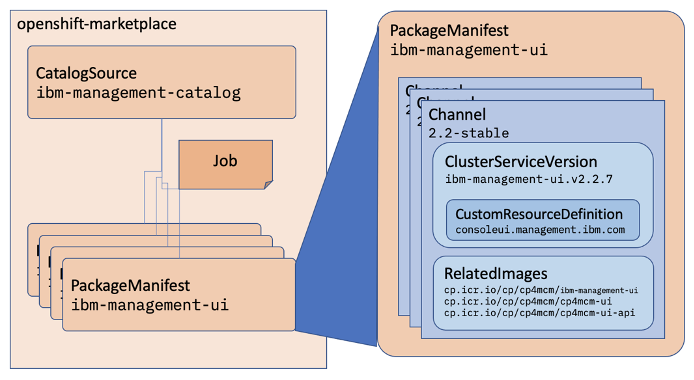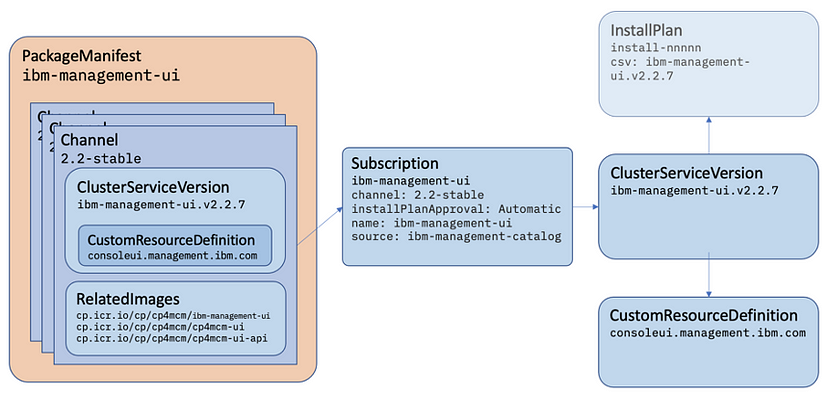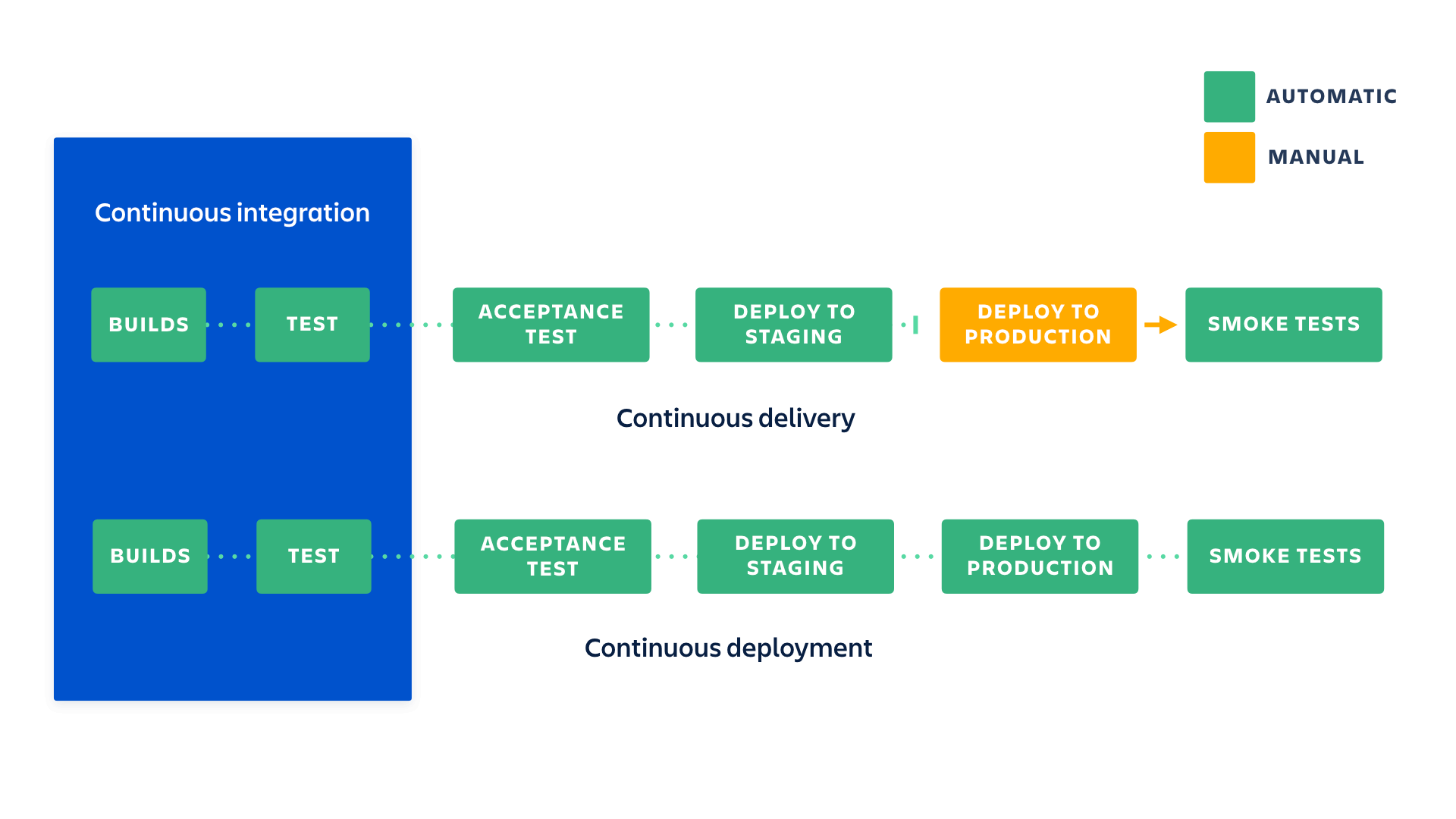DO380 "Red Hat OpenShift Administration III : Scaling Kubernetes Deployments in the Enterprise" notes in the margin
tags: red hat, openshift, kubernetes, containers
:memo: Table of contents
Chapter 1. Moving From Kubernetes to OpenShift
Kubernetes Docs: Organizing Cluster Access Using kubeconfig Files
Kubernetes Docs: Configure Access to Multiple Clusters
Reference Docs for Kustomize
Kubernetes Docs: The Kustomization File An overview of the content of a kustomization file.
Latest Openshift Clients and installer
https://github.com/kubernetes-sigs/kustomize
kustomize lets you customize raw, template-free YAML files for multiple purposes, leaving the original YAML untouched and usable as is.
kustomize targets kubernetes; it understands and can patch kubernetes style API objects. It's like make, in that what it does is declared in a file, and it's like sed, in that it emits edited text.
An Introduction to Kustomize
Southbridge blog post
Kustomize cfg: Configuration Basics
The Kubernetes Resource Model (KRM)
Kubernetes docs: Изучение объектов Kubernetes
OpenShift 3 Demystified. For Developers
Using Red Hat OpenShift image streams with Kubernetes deployments
How to Simplify Container Image Management in Kubernetes with OpenShift Image Streams
Chapter 2. Introduce automation on OpenShift
https://kubernetes.io/ru/docs/concepts/overview/working-with-objects/kubernetes-objects/
https://docs.okd.io/latest/rest_api/index.html
jq is a lightweight and flexible command-line JSON processor.
FX : Command-line tool and terminal JSON viewer
Automate OpenShift administration tasks using bash scripts and Ansible playbooks.
https://www.ansibleforkubernetes.com/
Youtube Video: Jeff Geerlings Kubernetes 101
Chapter 3. Manage operators with OpenShift
Openshift Docs: What Operators are?
Openshift Docs: Understanding Operator Lifecycle Manager
| Resource | Short name | Description | looks like |
|---|---|---|---|
| ClusterServiceVersion (CSV) | csv | Primary metadata resource describes operator. For example: name, version, icon, required resources. | rpm package |
| CatalogSource | catsrc | Information for accessing repository of CSVs (Operators), CRDs, and packages that define an application. (packagemanifests from catalogsource) | yum repository |
| Subscription | sub | Keeps CSVs up to date by tracking a channel in a package. (channel,approval mode) | yum install |
| InstallPlan | ip | Calculated list of resources to be created to automatically install or upgrade a CSV. | file list and scriptlets that runs to install rpm |
| OperatorGroup | og | Configures all Operators deployed in the same namespace as the OperatorGroup object to watch for their custom resource (CR) in a list of namespaces or cluster-wide. | |
| OperatorConditions | - | Creates a communication channel between OLM and an Operator it manages. Operators can write to the Status.Conditions array to communicate complex states to OLM. |
OpenShift Commons Briefing: Operator Lifecycle Management with Evan Cordell (Red Hat)
Demystifying Operator deployment in OpenShift
Делаем понятным развёртывание оператора в OpenShift
CatalogSource and PackageManifest
Channel and Subscription
Installed operator
O'Reilly free e-book: Kubernetes Operators: Automating the Container Orchestration Platform
Chapter 4. Implementing GitOps with Jenkins
https://www.prolinux.org/post/2017/09/vstuplenie-v-declarative-jenkins-pipelines/
Continuous integration vs. continuous delivery vs. continuous deployment
RedHat Developers Blogs: Building modern CI/CD workflows for serverless applications with Red Hat OpenShift Pipelines and Argo CD, Part 1
RedHat Developers Blogs: Building modern CI/CD workflows for serverless applications with Red Hat OpenShift Pipelines and Argo CD, Part 2
Youtube video: Что же такое GitOps? Его свойства и недостатки
Implement a GitOps workflow using containerized Jenkins to administer an OpenShift cluster.
https://habr.com/ru/company/southbridge/blog/535954/
https://developers.redhat.com/blog/2020/11/03/argo-cd-and-tekton-match-made-in-kubernetes-heaven
E-books The Path to GitOps Christian Hernandez
Chapter 5. Configuring Enterprise Authentication
Kubernetes Documentation | Reference | API Access Control | Authenticating
Openshift Docs: Supported Identity Providers
arctiq.ca blog post: OpenShift 4 Authentication via Azure AD
Chapter 6. Configuring Trusted TLS certificates
Openshift Docs: Adding API server certificates
- Create a secret that contains the certificate chain and private key in the openshift-config namespace.
- secret is the name of the secret that will contain the certificate chain and private key.
- /path/to/cert.crt is the path to the certificate chain on your local file system.
- /path/to/cert.key is the path to the private key associated with this certificate.
- Update the API server to reference the created secret.
- Replace FQDN with the FQDN that the API server should provide the certificate for
- Replace secret with the name used for the secret in the previous step.
- Examine the apiserver/cluster object and confirm the secret is now referenced.
Ingress Operator in OpenShift Container Platform
Openshift Docs: Ingress Operator: Setting a custom default certificate
- Create a Secret resource containing the custom certificate in the openshift-ingress namespace using the tls.crt and tls.key files.
- Update the IngressController CR to reference the new certificate secret.
- Verify the update was effective:
Configure OpenShift with trusted TLS certificates for external access to cluster services and applications.
Chapter 7. Configure Dedicated Node Pools
RedHat KB: How to add OpenShift 4 RHCOS Worker Nodes in UPI in new installations (< 24 hours)
Adding worker nodes to the OCP 4 UPI cluster existing 24+ hours
Adding new nodes to UPI cluster fails after upgrading to OpenShift 4.6+
OCP 4.6 Release notes: Ignition Spec updated to v3
Recommended cluster scaling practices
GitHub repo openshift/machine-config-operator: MachineConfigDaemon docs
GitHub repo openshift/machine-config-operator: Custom pool docs
Openshift docs: Red Hat CoreOS Server: Architecture
github openshift-installer docs: Troubleshooting Bootstrap Failures
https://www.youtube.com/watch?v=zQ7QfUY5Ulk
Chapter 8. Configure persistent storage
Understanding ephemeral storage
Pods use ephemeral local storage for scratch space, caching, and logs. Issues related to the lack of local storage accounting and isolation include the following:
- Pods do not know how much local storage is available to them.
- Pods cannot request guaranteed local storage.
- Local storage is a best effort resource.
- Pods can be evicted due to other pods filling the local storage, after which new pods are not admitted until sufficient storage has been reclaimed.
Unlike persistent volumes, ephemeral storage is unstructured and the space is shared between all pods running on a node, in addition to other uses by the system, the container runtime, and OpenShift Container Platform. The ephemeral storage framework allows pods to specify their transient local storage needs. It also allows OpenShift Container Platform to schedule pods where appropriate, and to protect the node against excessive use of local storage.
Openshift Docs: Understanding persistent storage
Openshift Docs: Available storage options
Kubernetes Blog: Kubernetes 1.14: Local Persistent Volumes GA
Chapter 9. Manage cluster monitoring and metrics
Configure and manage the OpenShift monitoring stack.
https://prometheus.io/docs/: QUERYING PROMETHEUS
)
PromQL examples:
- sum(container_memory_usage_bytes) / 1024 / 1024
- sum(container_memory_usage_bytes{image!='',node="master0.domain.tld"}/1024/1024) by (node)
- rate(apiserver_request_total{code!~"2.*"}[2m])
- 100 - avg by (instance) (rate(node_cpu_seconds_total{mode="idle"}[5m]) * 100)
- node_load5
Мониторинг и Kubernetes (Дмитрий Столяров, Флант, RootConf 2018)
Полное руководство по Prometheus в 2019 году
RedHat KB: Is it possible to add custom dashboards to OpenShift web console?
RedHat KB: Custom Grafana Dashboard for custom metrics
RedHat KB: Is it possible to add custom dashboards to OpenShift web console?
Ask an OpenShift Admin (Ep 31): Alertmanager configuration and customization
Полное руководство по Prometheus в 2019 году
Chapter 10. Provision and inspect cluster logging
Kubernetes Documentation |
Concepts | Cluster Administration | Logging Architecture
Chapter 10. Recover failed worker nodes
Inspect, troubleshoot, and remediate worker nodes in a variety of failure scenarios.
Openshift Docs: Replacing an unhealthy etcd member
Disclaimer: You will find here notes and links to official docs with additional information on products and technologies that described on RedHat training.
THIS DOCUMENT DOES NOT REPRINT ANY COPYRIGHTED CONTENT FROM REDHAT TRAINING. You will find here only public accessible outline.
